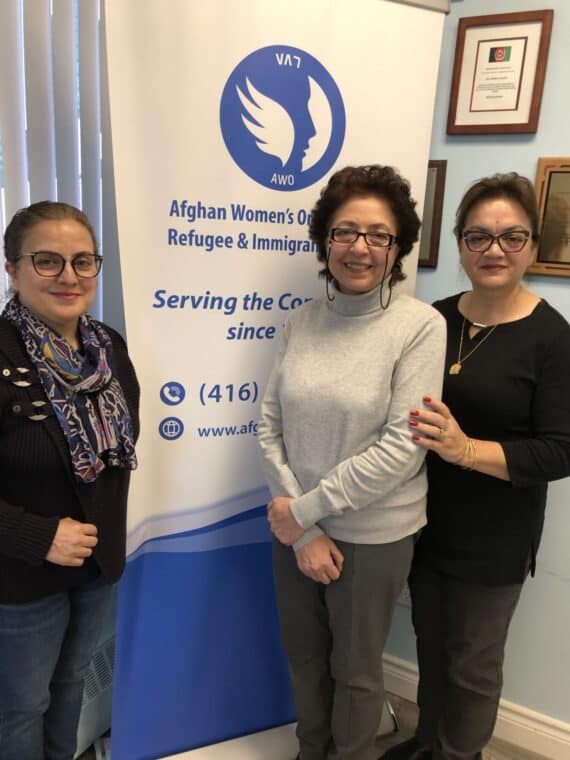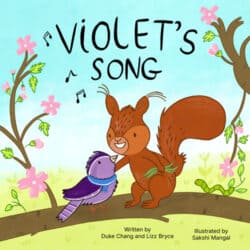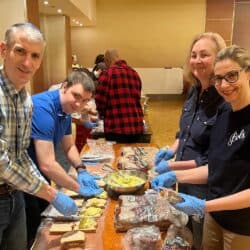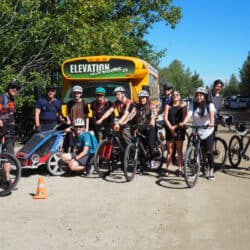The WES Mariam Assefa Fund’s Marina Nuri reflects on launching a participatory grantmaking pilot project and shares five recommended actions for funders that are seeking to experiment with participatory approaches.
Can we as a funder shift power to immigrant and refugee communities by looking at not only “what” we fund but “how” we fund? This question has been top of mind for the World Education Services (WES) Mariam Assefa Fund, the philanthropic arm of WES, since it launched in 2019. It gained even sharper resonance in 2020. That was the year the Fund launched operations in Canada, the year the pandemic began, and the year that researchers in Canada found that of any given $100 Canadian philanthropic grant, just 70 cents goes to Black-serving community organizations. Remarkably, only seven cents of every $100 goes to Black-led organizations.
The WES Mariam Assefa Fund (the Fund) is dedicated to dismantling inequitable systems and creating inclusive economies for immigrants, refugees, and racialized communities. The Fund team in Canada began our work determined to use the tools of philanthropy to work toward this vision. However, in 2020, when COVID-19 disrupted most people’s lives to various degrees, our newly hired team had to act fast. Given the urgency of the moment, we made decisions that were heavily reliant on our own research, conversations with various stakeholders in the sector, and recommendations from our networks. We ran several closed calls for proposals aligned with priority areas we had identified. We ultimately awarded $2 million in grants to organizations that met our selection criteria.
We were left with a nagging feeling that our decision-making process could have been more equitable.
The work we funded was solid. Some of the organizations we selected worked on the front lines of serving the most affected immigrant and refugee communities, while others were designing and testing innovative pilots to reduce barriers faced by newcomers. And yet, we were left with a nagging feeling that our decision-making process could have been more equitable.
As we looked back on the work, we asked ourselves if we were best positioned to decide what was more important to fund that year. And were we best positioned to decide what organizations (among many!) should be invited to apply and then be awarded funding? The increased urgency to focus on racial justice and decolonization following George Floyd’s murder and discoveries of mass graves at residential schools in Canada put an exclamation point on our discomfort.
Our reflections and belief that truly supporting immigrants and refugees meant shifting away from traditional grantmaking models, which often concentrate all power on one side of the ledger, led us to experiment with a new, radical funding model: participatory grantmaking.
As we reflect on what we’ve learned, we encourage other funders to consider participatory funding approaches – and recommend actions that they can take to do so.
Participatory grantmaking in action
Participatory grantmaking – a practice of engaging community members in funding decisions that affect them – exists along a spectrum. At one end, funders can involve community members in certain parts of the decision-making process. At the other end, funders completely cede decision-making power to community members. This form of grantmaking is modelled on an approach that has been used for decades in community organizing, deliberative democracy, and community development. But the model remains far from mainstream in philanthropy.
In 2021, with an eye on the radical imbalance in funding identified by Canadian researchers and on the gap between our own best intentions and the grantmaking process we followed in 2020, the WES Mariam Assefa Fund decided to evaluate how we might test a radical grantmaking model that almost entirely redistributed power to those with the closest connection to need: community members.
The Fund decided to evaluate how we might test a grantmaking model that almost entirely redistributed power to those with the closest connection to need: community members.
Following a listening tour involving other funders in the US and Canada, as well as our grantee partners, the Fund team opted to launch a pilot where they would cede all decision-making power to one specific community. Our intention was to learn more about this approach to be able to scale it further.
For this pilot’s purposes, we needed to find an implementation partner with experience in community engagement and program evaluation. We partnered with Tamarack Institute, which has expertise in both areas and was also interested in learning more about participatory grantmaking.
Our next step was to select a pilot community. As a national funder focused on immigrants and refugees, the Fund was interested in running the pilot in a community that has a significant immigrant and refugee population. Following a community application process, we selected Peel Region in Ontario. More than 50% of the population in Peel was not born in Canada, and it has a high concentration of international students and migrant workers – some of the most underserved populations in Canada. We then identified a strong local partner: Peel Newcomer Strategy Group (PNSG), which could help bring together a diverse group of community leaders.
The People’s Panel
Through an open application process, we identified a community advisory group for the pilot – the People’s Panel. The 12 members of the People’s Panel, who were compensated for their work, brought rich lived and worked experience from various immigrant and refugee communities in Peel Region, including international students, former temporary workers, and immigrant-serving agency workers.
As the community was identified, the Fund’s team stepped back and took the role of an observer. The funding for this pilot had been pre-approved by the Fund’s board and transferred to Tamarack, which would then use it to award grants based on the People’s Panel’s decisions. We received regular updates on the pilot and brainstormed key decisions with Tamarack, as needed, since both the Fund and Tamarack were on an intense learning journey.
As the community was identified, the Fund’s team stepped back and took the role of an observer.
The role of the People’s Panel was to identify the grantmaking priorities for this pilot, decide how the call for proposals should be run, decide what criteria should be used to select the grants, and finally, after receiving applications from community organizations, to select who should receive the funding.

Tamarack played a facilitator role in this process, not influencing the People’s Panel decisions in any way. Through five virtual sessions, the People’s Panel discussed the community’s needs, agreed on the priorities for this specific funding opportunity, decided on the approach to funding, and developed application guidelines.
After the call for proposals was issued, it was widely promoted in Peel. Tamarack offered coaching to applicants and ensured that all types of applicants, including those without charitable status, could apply – as that was something that the People’s Panel felt strongly about.
After reviewing the applications, the People’s Panel made the funding decisions, and Tamarack awarded grants to six selected organizations in Peel region. In the second year of the pilot, Tamarack has been managing the grants, providing coaching and support to the six grantees. The Fund has joined some of the cohort meetings as an observer, and so have some of the People’s Panel members interested in staying involved.
What can other funders learn from our experience?
Below are five actions for other funders who are looking at experimenting with participatory approaches:
- Start “small” to make it easier for your board to support this approach and learn from this experience. Shifting to a participatory approach might sound like a huge (and unrealistic) change to the way your foundation does things now, so starting small will allow you to experiment with speed and reduced risk. It will also be easier to convince your board to try this approach if you propose to do it with a smaller envelope of funding. Start with one specific community first, ideally have the grantmaking amount pre-approved, and use this experience to learn from it and to create an internal case for scaling this approach further.
- Work with an “easier” community. Depending on the foundation’s focus, a community can be geographic or population-level. For the purposes of the initial pilot, it will be easier to work with a community that has clear needs for funding as well as prior experience of place-based or collective impact work or existing community groups that this pilot could build on. Having Peel Newcomer Strategy Group as a local partner was extremely helpful in bringing together the People’s Panel and establishing an information exchange with a larger community, thanks to its credibility, deep connections with immigrant-serving organizations in the region, and experience convening various stakeholders in the sector. Having established community mechanisms can also help ensure that the learnings and energy generated through this participatory process at the community level can continue past the pilot and be applied to other community initiatives going forward.
- Consider working with an implementation partner or intermediary organization. For funders who are just dipping their toes in participatory grantmaking, working with an intermediary can help overcome internal capacity constraints and allow for an intentional learning process. Developing close relationships with community partners, ensuring that there is community buy-in, facilitating community sessions to enable dialogue and consensus, managing tensions and potential conflicts of interest – all require time and capabilities that funders often do not have from the get-go. Working with an experienced intermediary can allow a funder to learn from a distance before embedding the learnings in its broader grantmaking strategy. An intermediary can help bridge the power differences inherent in most funder–grantee relationships.
- Ensure the process is transparent. Before starting a participatory grantmaking pilot, the funder needs to establish boundaries around its participation and engagement: Would community members be able to make all the funding decisions themselves, or would they just advise the funder in making these decisions? Would the funder want to have a say in what the funding priorities and selection criteria should be? Different approaches are possible depending on the funder’s comfort level, but we would recommend thinking about it in advance, because changing the level of the funder’s engagement toward more control throughout the process might jeopardize the community’s trust. It is also important to remember the wider community that a people’s panel represents and establish a feedback loop to ensure transparency of the decisions made and a wider community buy-in.
- Keep an open mind about where this process can go. Allowing community members to make funding decisions on behalf of a funder might feel very new and uncomfortable. At times, a funder might disagree with the direction taken and feel that community members are not making the right decisions. The funder should embark on this process ready to feel this discomfort and let go of its desire to control the outcome. A key principle in participatory grantmaking is that “communities know best.” Although funders might feel that sometimes they know better thanks to their helicopter view of the whole field and being exposed to multiple communities and grantees, they need to recognize that they have this exposure because of the privileged position they were placed in as funders. This power imbalance is exactly what participatory grantmaking is trying to change, so these uncomfortable feelings should be embraced and used as a learning opportunity.
The impact
As part of its pilot evaluation, Tamarack is assessing whether the participatory process has been seen as legitimate and relevant by all stakeholders, and whether it has managed to empower communities to make funding decisions that are responsive to the local context. The Fund hopes the evaluation results will further inform its participatory grantmaking strategy and will be helpful for the philanthropic field as more foundations look at equitable approaches to grantmaking.
The Fund hopes the evaluation results will further inform its participatory grantmaking strategy and will be helpful for the philanthropic field as more foundations look at equitable approaches to grantmaking.
The results we have seen so far have been impressive. First, participating in the People’s Panel was empowering for community members. Even though it is becoming a widespread practice for funders to seek feedback from community members through surveys and consultations, it is exceedingly rare for community members to be given full decision-making power over distribution of the funding budget. From what we heard from the participants and from Tamarack, the energy during those meetings and sense of ownership that participants demonstrated was remarkable. To us at the Fund, this experience felt like finally correcting the power imbalance in philanthropy.
It is exceedingly rare for community members to be given full decision-making power over distribution of the funding budget.
Secondly, the organizations selected for funding by the People’s Panel represented the values and goals that the WES Mariam Assefa Fund would want to see in organizations it funds. Most of them were BIPOC-led and focused on serving the most underfunded groups in Peel Region. With their one-year projects, they are designing and launching new models of service delivery that they have been thinking about for a while but were struggling to find funding for. We’re not sure we would have identified these amazing organizations and awarded grants to them ourselves without the People’s Panel. From our “ivory tower,” some of these projects might have looked not innovative enough, not focused on systems change enough – all the criteria funders use in their decisions that often create barriers for some of the smaller organizations doing core work in their communities.

This pilot in Peel has started a chain reaction: this year, our US team is launching a participatory funding initiative focused on building inclusive communities across the country. We are entering new co-funding partnerships where, by mutual agreement, grants will be awarded in participatory ways with direct community involvement. We are reviewing our internal processes and seeing how participatory approaches could be used in the way we do other funding initiatives and decide on grant renewals.
As the pilot in Peel is ending, we are developing a participatory process to decide what projects the Fund should continue funding directly. Working with Tamarack, we will bring together the People’s Panel again so that they can see how the projects they funded went and which ones they would recommend for the Fund to renew.
We at the WES Mariam Assefa Fund believe that the more funders use participatory approaches in their grantmaking, the better off communities will become. We are always open to talking to other funders to share our experience and learnings and to collaborate on transforming philanthropic practices.


